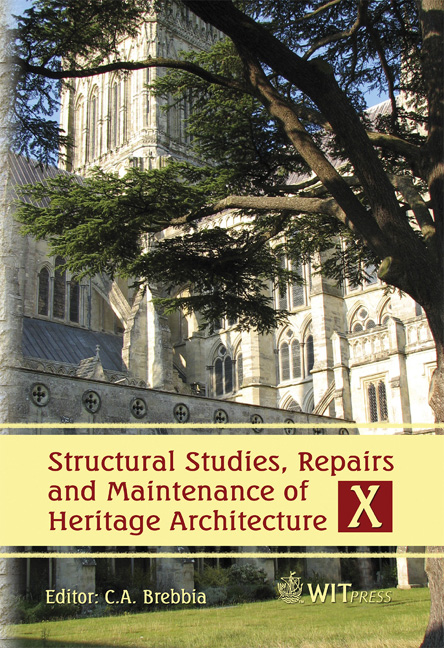Criteria For Integration Of New Structures In The Conservation And Restoration Of Adobe Ruins: The Temple Of The Ex-mission Of Cocóspera In Sonora, México
Price
Free (open access)
Transaction
Volume
95
Pages
11
Published
2007
Size
851 kb
Paper DOI
10.2495/STR070071
Copyright
WIT Press
Author(s)
L. F. Guerrero Baca & F. J. Soria López
Abstract
This paper describes the problems encountered in the conservation of heritage property built with adobe, specifically those in an advanced ruinous condition. In spite of the development and application of diverse modern techniques to protect and consolidate adobe ruins from environmental factors, their deteriorating process has not been stopped. It seems as if the only way to preserve adobe structures has to do with the restitution of the whole constructive system of which it is a part. However the restitution of lost elements must avoid reconstruction processes that can jeopardize the buildings’ authenticity. It is here where architectural integration plays a major role in the restoration of heritage buildings in a ruinous state. This paper explains the concepts of authenticity and integration and describes the criteria established for the restoration project of an ancient adobe temple in northern México in order to save its last vestiges. Keywords: cultural heritage conservation, authenticity, architectural integration, architectural restoration, adobe conservation. 1 Introduction Architecture that is built with soil is one of the oldest building traditions used by different cultures throughout history. Taking advantage of the natural resources available in the surrounding environment of buildings is not a very common practice in modern architecture, but this context-based constructive logic is constantly found in buildings of the past.
Keywords
cultural heritage conservation, authenticity, architectural integration, architectural restoration, adobe conservation.




